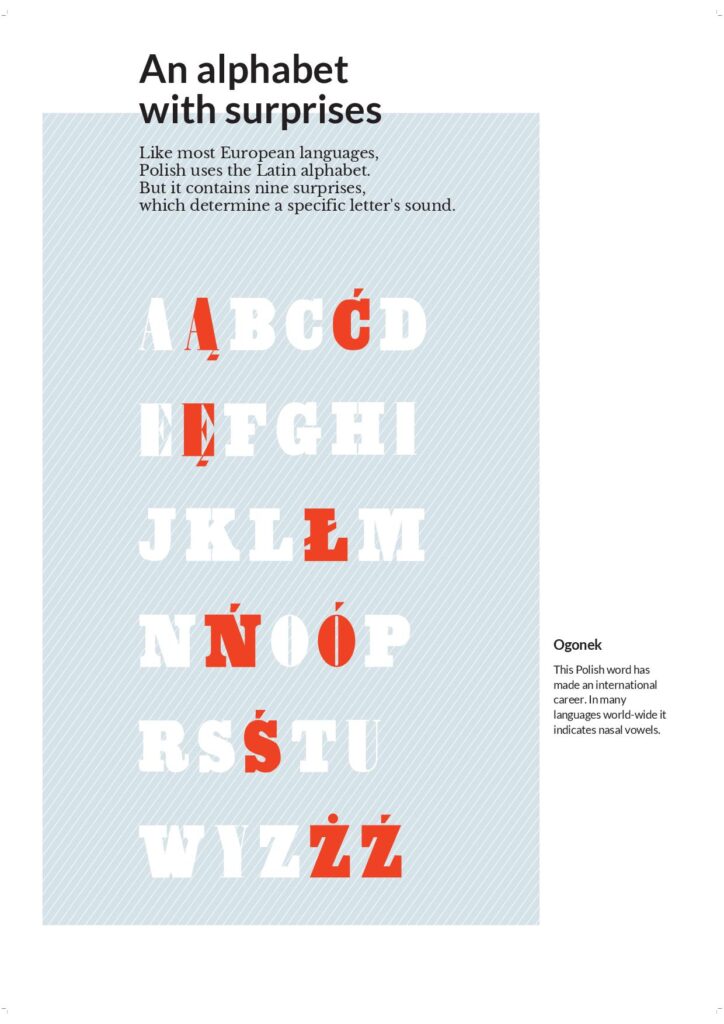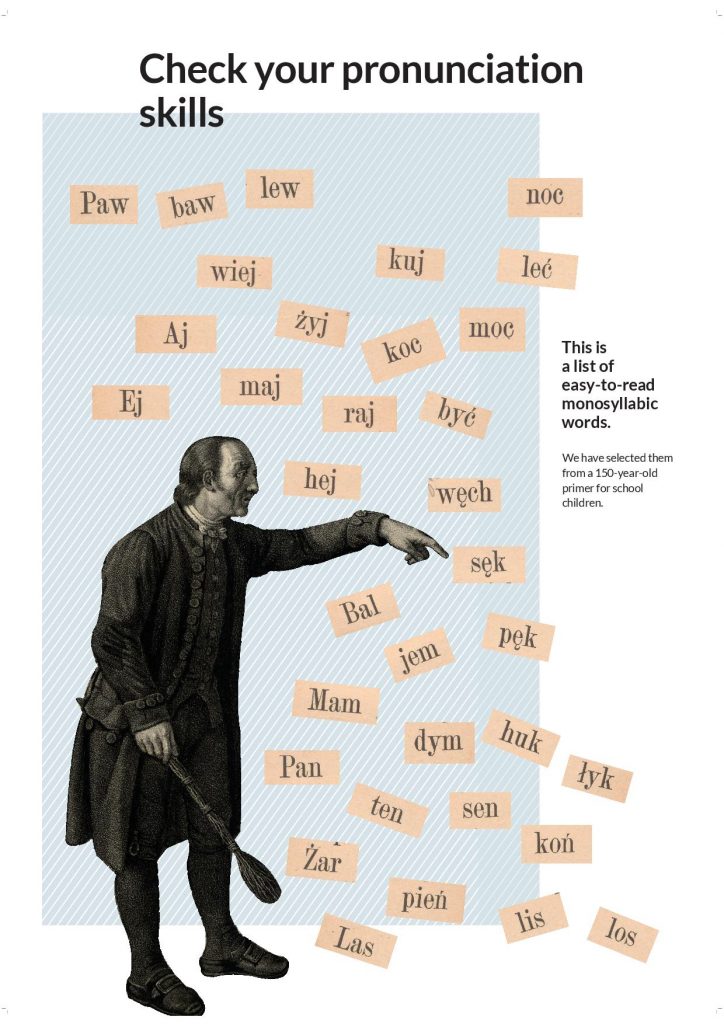
Polish is the second largest Slavic language in the world in terms of the number of users. About 50 million people actively use it, and at least 10 million demonstrate passive knowledge of it. Thus, Polish is the largest Slavic language in the European Union, and together with Castilian Spanish, it is the fifth ethnic language, after German, English, French, and Italian.
Polish belongs to the group of Indo-European languages and the subgroup of West Slavic languages, along with Czech, Slovak, Kashubian, Lower Sorbian, Upper Sorbian, and the now extinct Polabian.
It is estimated that the average Pole actively knows about 30,000 words and passively understands about 100 thousand, but does not use them. According to some Polish philologists, it is enough to know the 1200 most commonly used words to be able to speak Polish.
The Polish alphabet is based on the Latin alphabet and consists of 32 letters. There are nine letters created using diacritical signs: ą, ć, ę, ł, ń, ó, ś, ź, and ż. In addition, the language notation has seven digraphs: sz, rz, cz, ch, dz, dź, dż, and one trigraph, dzi.
Declension occurs in the Polish language. Nouns, adjectives, adjectival participles, factual pronouns, adjective pronouns, numeral pronouns, and numerals change through seven cases. Verbs are conjugated by persons, tenses, modes, pages, and numbers, as well as aspects.
The oldest sentence in Polish, “Day, ut ia pobrusa, a ti poziwai” (“Daj, ać ja pobruczę, a ty poczywaj”), was written in the Latin alphabet in 1270 in Wrocław in the Henryków Book. Now this sentence is part of the UNESCO World Memory List. In 1285 at the congress in Łęczyca it was decided that Polish would be used alongside Latin in monastery and cathedral schools.
The Polish language was influenced by Latin, Greek, German, Czech, Ruthenian, Turkish, French, Italian, Russian, Hungarian, and Yiddish. Currently, the greatest influence is the lingua franca of our time: English.
The main dialects of the Polish language are: Greater Poland, Lesser Poland, Silesian, Mazovian, Chełmno-Kociewie-Warmia dialect, and Northern and Southern Borderland.
For more information:
Multimedia Guide to Polish Language: http://multimediaguides.culture.pl/multimediaguides/alphabet/the-polish-alphabet/0
Poland.pl: https://poland.pl/social-issues/social/polish-language-simple-language/
Information about where in the world you can learn Polish and about Polish book collections on an interactive map of Poland, outside of Poland: https://polski.msz.gov.pl/
Dissemination of the Polish language abroad: https://nawa.gov.pl/jezyk-polski

